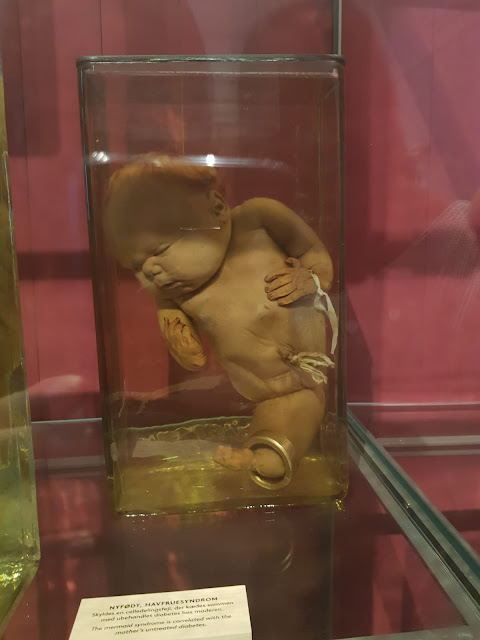Medical Museion (free on class excursion)
Address: Bredgade 62, 1260 København, Denmark
Opening Hours:
Note: photographs are allowed throughout the exhibition, just no flash. Most of the identifying information regarding the real human specimens has been hidden as a means to protect their identities, mostly because the specimens were collected rarely without the consent of either their parents or the individuals themselves.
Address: Bredgade 62, 1260 København, Denmark
Opening Hours:
- Tuesday - Friday @ 10:00 - 16:00
- Saturday - Sunday @ 12:00 - 16:00
- Monday closed
Cost:
How to get there:
- Adults @ DKK75
- Students / Children / Pensioners @ DKK50
Posters in the reception area
- From Lund C, take the train and alight at Copenhagen Airport (Köpenhamns flygplats Kastrup/Lufthavnen)
- Walk to the metro station: catch the yellow line towards Vanløse and get off at the metro station Kongens Nytorv in central Copenhagen
- Walk across the square along the street of Bredgade towards the museum at Bredgade 62
Thoughts on the Exhibition/s:
I personally found the (main) focus of the exhibitions on human conditions, particularly the whole-body fetal specimens to be absolutely fascinating. I loved it. I loved listening to the guide speak of the history of the building itself, the architecture, culture of hospitalisation and treatment beginning in the 16th Century (long story short, it was very unscientific and not good).
My favourite aspect of the exhibition involved learning about why the collection became a thing in the first place - because some male Danish science guru wanted to show the public that birth "deformities" were not the result of God punishing women, or the mother's evils or bad deeds, but that they were naturally occurring and more common than people believed them to be. Essentially, he tried to de-stigmatise less-than-desired-births and prevent the demonisation of birthing mothers.
What I didn't like: I strongly objected to the anthropocentric ideology that permeated the entire exhibition space - after looking through displays of human disease and many content warnings of potential distress, they readily showed video clips in the basement of a rat dissection. (See: Erica Cudworth on "species hierarchies" and Melanie Joy's Why We Love Dogs, Eat Pigs and Wear Cows [2009]).
***
Content Warning: Some of the following photographs of the specimens may be distressing to some individuals. Viewers act and proceed at their own digression.
***
Siamese/Conjoined Twins (c. 1700s - 1800s)
Infant Cerebral Haemorrhaging (caused by lacking of maternal folic acid during pregnancy)
"Mermaid Babies"
Bones: displays of disease e.g., prolonged progression of tubercolosis
Hydrocephalus (patient 6-month old)














Comments
Post a Comment